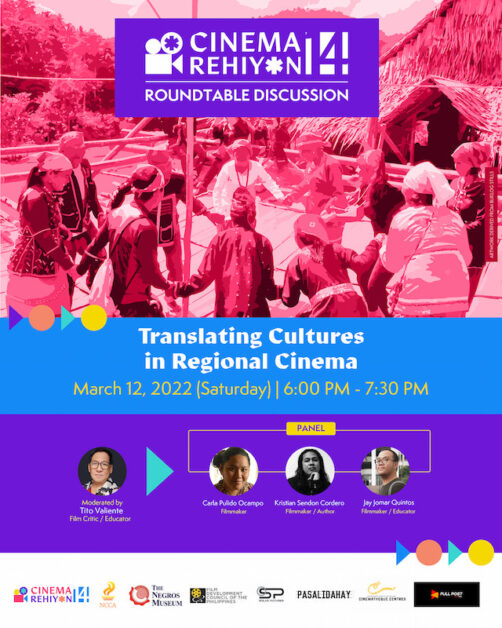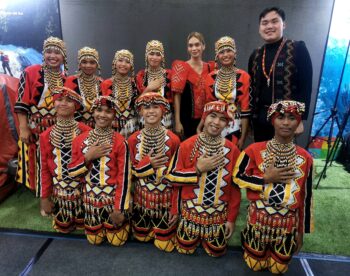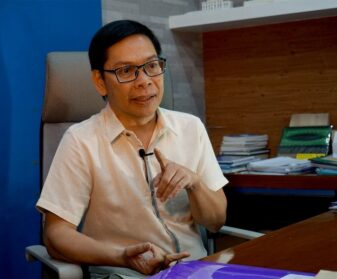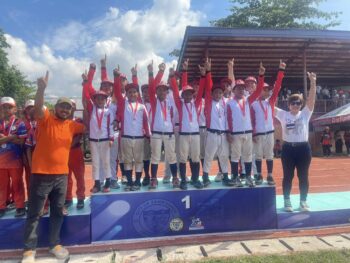In the field of communication studies, “decoding” instead of “translating” is the term used to refer to the process of turning communication into thoughts. Decoding cinematic messages indicates the task of interpreting and understanding the codes. Cinema is imagined here as a medium that communicates and depicts different shades and tints of cultures and reality. It can then be opined that cultures and cinema are both discourses that can be a cornucopia of various codes. These codes operate in the contending forces within the ambit of social, political, economic, cultural, and ideological spheres.
When one says Translating Cultures in Regional Cinema, it can be read through the prism of humanities where cinema is imagined as an art form of moving images. In Philippine film studies, the nomenclature “regional cinema” was possibly first popularized in Teddy Co’s essay, “In Search of Philippine Regional Cinema,” published in the inaugural issue of Mowelfund’s film magazine The Movement in 1987.
Co zeroes in on the importance of the styles, techniques, and aesthetics that resonate from the “cinemas” outside Metro Manila. In his imagination, the future direction of Philippine cinema lies beyond the confines of the dominant and ruling establishments in the country’s national capital.

One may argue that this speculation borrows from what eminent interlocutors in the other art forms in the Philippines – say for example, literature – have been asserting since the post-World War II era. Foremost of which are Renato Constantino, Rolando Tinio, Rogelio Sicat, and Bienvenido Lumbera.
In early 1976, Bienvenido Lumbera wrote the essay “The Rugged Terrain: The State of Literary Research in the Philippines,” which postulates an agenda on mapping the trajectory of “vernacular literature.” One can heed the nomenclature used by Lumbera – vernacular – which connotes the use of various languages in writing and reading literary works native to a place. Later, Resil B. Mojares wrote an essay titled “On Native Grounds: The Significance of Regional Literature,” which lays bare the weight of probing “regional literature” seriously. It also paves the way on how Cebuano literary texts should also constitute our aspiration in cementing the groundwork for national literature.
In 2001, after almost 25 years, Lumbera published an anthology titled Filipinos Writing: Philippine Literature From the Regions. It is remarkable to note, at this point, that both the nomenclatures “vernacular literature” and “regional literature” have their fair share of possibilities and limitations. On one hand, the former articulates the wide array of works written in different languages but restricts itself to numerous imaginings. On the other hand, the latter is more institutionalized yet limiting in the discourse of constructing and embodying the scope of the “nation” beyond its geographical imaginations.
In the dearth of scholarship on the cinema from the regions, “regional cinema” has become a standard nomenclature. The groundbreaking and monumental project that is the Cultural Center of the Philippines Encyclopedia of Philippine Art, most notably the second and revised edition of the Film volume, has a 10-page entry on “Regional Cinema” in the Historical Essays section. One may then deduce that there is a paradox in the nomenclature “regional cinema.” While it perfunctorily assimilates the marginalized narratives and aesthetics in the consciousness of the Philippine state, its categorization still adheres to the administrative and spatial boundaries imposed by the state. In this regard, how do “regional cinemas” negotiate with the premise of being “limited” and “sovereign,” to borrow Benedict Anderson’s words?
Two films in and on Mindanao can be cited to propose theoretical insights on the discourse of “regional cinema.” First is Arnel Mardoquio’s Alma-ata (2019), a progressive film that narrates the theories and practice of the CPP-NPA (Communist Party of the Philippines – New People’s Army) in the Philippines and overseas. It limns a brutal war between a state force, the paramilitary group in Mindanaw, and a revolutionary army in the countryside, the CPP-NPA.
Alma-ata tells the story of how a Filipina immigrant in Australia returns home to the Philippines to retrieve the remains of her health worker parents who were killed and tortured by a right-winged vigilante group called “Alamara.” The film unfolds the different processes involved in the struggles and dreams of the revolutionary armed group, the lifeworlds of the Indigenous Peoples in Mindanaw that are inevitably harassed by various forms of military machinery, and the connivance between military people and vigilante groups to forward their personal interests.
While Alma-ata sets forth important and relevant issues that Mindanaw and Sulu are facing, it is important to note that the film was never shot in the Island-Region and its nearby Archipelago. Scenes from Alma-ata were shot in Melbourne, Australia and Los Baños, Laguna. The diegetic world by the filmic narrative uses languages, such as Tagalog, Sugbuanong Binisaya, and English. One may then be tempted to ask: Can we consider Alma-ata as a Mindanawon film? On one hand, Mardoquio is a foremost voice in the Mindanaw Cinema New Wave Movement today, along with Gutierrez Mangansakan II, Arbi Barbarona, Bagane Fiola, Jean Claire Dy, Yam Palma, Joe Bacus, Ryanne Murcia, Zurich Chan, Glorypearl Dy, Sheron Dayoc, and Sherad Anthony Sanchez.
On the other hand, Alma-ata may be read as a transnational film that was funded by Filipino and Australian producers. These turns trigger us ponder: what is the sense of becoming “limited” and “sovereign” in regional cinema vis-à-vis the concept of the “state” and its embodiment of the constructed and imagined “nation”?
The second film that may help us expound on the issues that surround the fluidity of regional cinema is Chuck Gutierrez’s Iisa (2015). Impressively written by Arnel Mardoquio, Iisa tells the story of a community in Brgy. Andap, New Bataan, Davao de Oro (formerly known as Compostela Valley) after the devastating Typhoon Pablo in 2012. The film presents a motley of characters from different groups and sectors in the society – both the oppressors and the oppressed. In the film, we are introduced to a woman named Ross who is guilty of a sin against the revolutionary group, NPA kadres who help restore what was wrought by the typhoon, church workers who do charitable deeds in the community, and military soldiers who perpetuate the status quo to protect politicians and businessmen. The film was shot on location at Compostela Valley, now known as Davao de Oro, where the impact of Typhoon Pablo is quite evident in its bleak landscape.
The film, though, has been questioned by many for its palpable flaws. While Mardoquio’s screenplay seems immersive – yet sometimes sentimental – in the ways of the revolutionary movement, the director’s vision is not fully realized in the film. Chuck Gutierrez, an award-winning film editor from Manila, could have fleshed out the nuances on the devastated community of Brgy. Andap, New Bataan. The place is known to be a Lumad community but there is a blatant erasure of their plights and struggles in the film. There’s not even a scene that depicts or mentions the Indigenous Peoples; the narrative seems to focus on the Christianized characters. But the ominous point of Chuck Gutierrez’ directorial choice can be found in the film’s ending, when the group of NPA kadres ransacked an NFA warehouse due to food blockade. One of the characters, Ross, brilliantly played by Angeli Bayani, was shot by a military soldier. In the next sequence, we see a soldier carrying Ross’s dead body, a la Madonna and child, in a picturesque sunset background. This, perhaps, is the tenor of the “defect of distance” between the director and the story that is etched in both the quotidian and monumental events in Brgy. Andap, New Bataan, Davao de Oro. Hence, we ask, is Iisa a Mindanawon film?
Recently, Brgy. Andap, New Bataan in Davao de Oro made headlines again when five community workers or the New Bataan 5 – including two Lumad school teachers Chad Booc and Gelejurain Nguho II, one health worker Elgyn Balonga, and two accompanying drivers Tirso Anar and Robert Aragon – were allegedly killed in an encounter between the elements of 10th Infantry Division of the Armed Forces of the Philippines and the New People’s Army. The locals in Brgy. Andap, however, declare that there was never an encounter in their place on 24 Feb 2022.
The findings in the autopsy report, done by Filipino forensic pathologist Dr. Raquel Fortun, declare that Chad Booc’s remains showed signs of disproportionate violence with internal hemorrhages, numerous lacerations, and severe injuries that caused his quick death. These findings may discard the AFP’s earlier pronouncement that there was a two-way encounter in Brgy. Andap. Furthermore, in an interview by the Save Our Schools Network on 11 March 2022, Dr. Fortun was quoted saying: [B]ooc’s death can be classified as homicide.” Various human rights groups claim that the New Bataan 5 is probably the most recent victim of extra-judicial killings in the country.
In all this, one may contend that the narratives from Mindanaw and Sulu resonate to the stories in Manila and its adjacent provinces, albeit contexts and nuances ought to be teased out further. But there are still conundrums that haunt us. Where do we draw the line on the fluidity, limits, and possibilities of “regional cinemas”? How do we make our imagination of “regional cinemas” transcend the evolving shifts in the administrative component of the state, and how can we form and re-form its politically and culturally accepted nomenclature? And finally, how can we make “regional cinemas” more perceptive and functional in relation to the matrix of “national” and “international” subjectivities and experiences, if the state and its forces – where it adheres its imagination – are killing its own people?
(Jay Jomar F. Quintos is associate professor at the University of the Philippines.
This essay was first read at the “Translating Cultures in Regional Cinema” Round-Table Discussion at the “Cinema Rehiyon 14: Katilingban. Kalibotan. Kabag-ohan” on 12 March 2022, sponsored by the National Committee on Cinema of the NCCA. This year’s Cinema Rehiyon was programmed by Davao artist and cultural worker Angely Chi).






